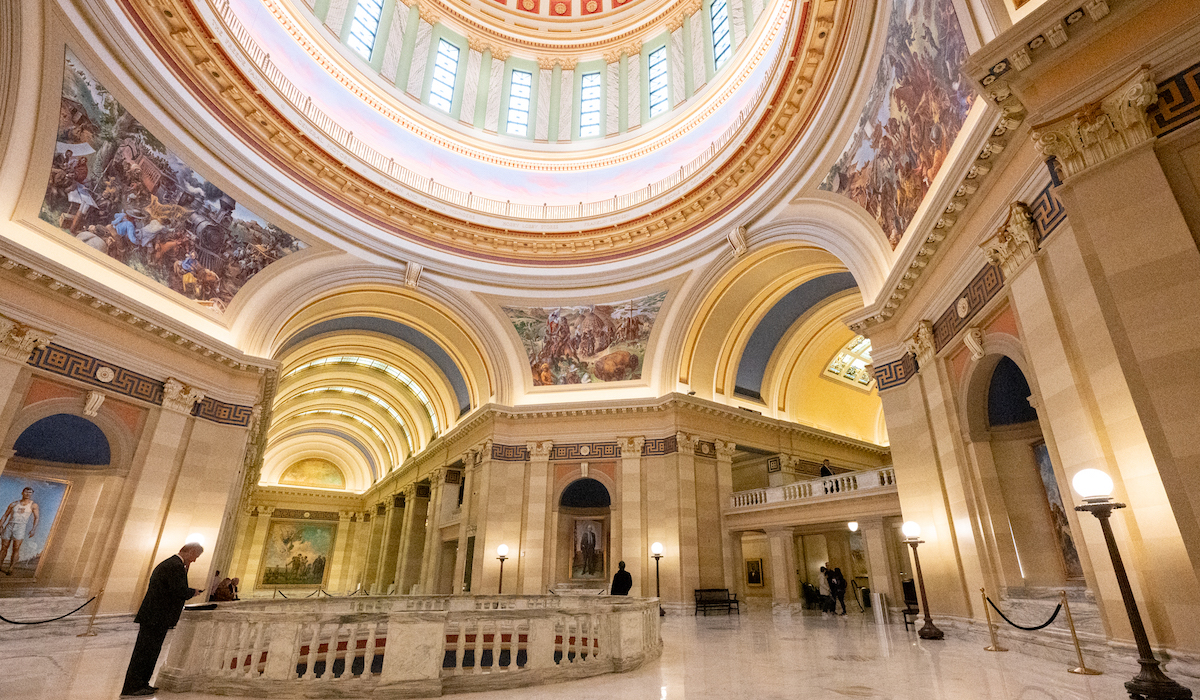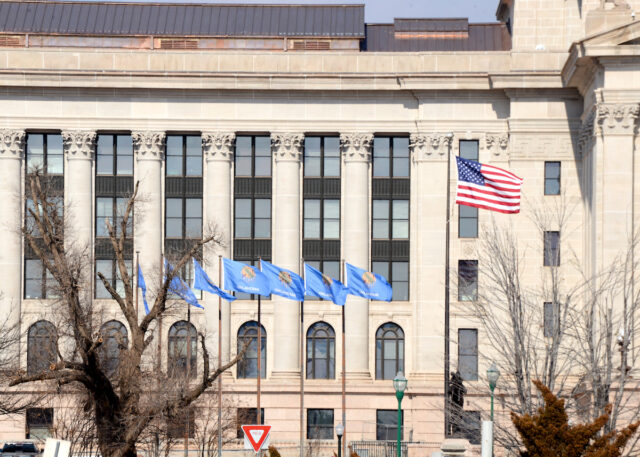
With tumultuous education negotiations behind them, leaders of the Oklahoma Legislature have now turned their attention to hashing out other high-price decisions for the state.
Several items are on the table, including tax reform, economic development, a new program to incentivize affordable housing, targeted transportation projects, and a potential new fund for the investment benefit of the state of Oklahoma. Earlier this week, lawmakers announced a concurrent special session aimed at providing additional time to finalize the Fiscal Year 2024 budget.
RELATED
Education deal: Teacher pay, maternity leave and formula tweaks to unlock tax credit bill by Tres Savage & Bennett Brinkman
Budget negotiations Tuesday evening ironed out some details, with additional conversations ongoing. Final decisions will ultimately rest with House Speaker Charles McCall (R-Atoka), Senate President Pro Tempore Greg Treat (R-OKC) and Gov. Kevin Stitt.
Asked about the situation, Senate Appropriations and Budget Vice Chairman Chuck Hall (R-Perry) said today that budget leaders have proposed “a lot of one-time expenditures that we’re discussing.” Many of those ideas have originated in the House, which has also expressed stronger support for tax cuts than the Senate.
“Now that the education piece has been settled and agreed to, those of us in appropriations can really get started in earnest on finalizing the budget,” Hall said. “I see an end in sight very soon. I would hope that in the next 48 hours or so we will have worked through the budget and will be prepared to send our recommendations to the principles, being the pro temp and the speaker of the House.”
The following article outlines five topics yet to be decided in the session’s final FY 2024 budget negotiations. Details are based on previously reported information, interviews with lawmakers, background conversations and legislation filed this year.
Follow @NonDocMedia on:
Stitt, McCall seek ‘tax relief’ for Oklahomans

For two years, legislative leaders have been in a stalemate over a variety of tax cut proposals pitched by Stitt. The governor has expressed support for eliminating the state portion of sales tax on groceries, lowering the personal income tax rate by 0.25 percent and decreasing the corporate income tax rate.
McCall and House Appropriations and Budget Chairman Kevin Wallace (R-Wellston) have emphasized a desire for reductions in the personal income tax and corporate income tax rates. Treat and Senate Appropriations and Budget Chairman Roger Thompson (R-Okemah) have expressed more caution about the state budget next year and subsequent years, during which economic constriction and revenue slowdowns have been predicted.
“The governor’s very interested in tax cuts. I’m interested in a balanced budget that makes sure we are able to take care of the future. Some of our caucus members are interested in it, but I think as a whole we are interested to make sure we take care of the people of Oklahoma,” Thompson said May 9. “That conversation, to me, centers around what we are going to be spending in recurring revenue. One of those is in education, and if that allows for tax cuts to come back into the conversation, then certainly we’ll have that conversation.”
Thompson attempted to distinguish his personal feelings from the broader political calculations of Treat and the Senate Republican Caucus.
“As far as Roger is concerned, I am not for tax cuts,” Thompson said. “I was here in 2018. I know how difficult it is to get revenue here. The people in my district are asking for services.”
Days earlier, McCall had floated the notion that a personal income tax rate reduction could either be done “permanently” or as a two-year moratorium.
“I think the one that helps Oklahomans is the cut to the personal income tax,” McCall said at a press conference May 3.
During Monday’s joint press conference announcing the education deal, Stitt fielded a question about tax cut negotiations, standing in front of McCall and Treat as he reiterated his fuzzy-math figure about the state having more than $6 billion in “savings.”
“If not now, then when?” Stitt said. “I think with inflation, Oklahomans certainly want that (tax cut).”
If a 0.25 percent personal income tax rate reduction makes it into final budget agreements, it could include a hike in the standard deduction as a way to provide additional benefit to lower- and middle-income families.
“What that does for low-income earners is it raises the exemption that they have before they start paying their first penny of tax to the state,” McCall said May 3. “That truly is a win-win for all socio-economic classes in the state.”
What will lawmakers do for Panasonic, other economic development?

For the past two years, the Oklahoma Legislature has been asked by Stitt and the Department of Commerce to prioritize up-front funding to incentivize Panasonic to build an electric-vehicle battery plant at the MidAmerica Industrial Park in Pryor.
But various factors have complicated the issue. Now, with the governor and Commerce hoping the Legislature will approve Panasonic’s request for a $245 million appropriation to address infrastructure needs in the Pryor area — such as a hazmat station, land prep and relocation of a stream and a rail line — the issue has been complicated by other budget negotiations.
McCall has consistently said his House Republican Caucus wants the Senate to agree to a tax cut if the state is going to dedicate more money to the Panasonic project.
Additionally, lingering frustrations from rural lawmakers about why most major economic development projects have been recruited to MidAmerica in Pryor have spurred discussions about potentially dedicating other funding to site preparation efforts around the state. To that end, lawmakers sent $250 million last session through a new Progressing Rural Prosperity (PREP) Fund aimed at advancing industrial sites and other economic development opportunities across Oklahoma.
The concept of an additional PREP investment — perhaps equal to the $245 million figure proposed for Panasonic’s MidAmerica project — has been floated as a way to get rural lawmakers’ support for further incentivizing the Japanese manufacturer to select Oklahoma.
On Monday, the Legislature sent Stitt bills appropriating $180 million to pre-fund existing incentives for the Italian energy company Enel to build a solar panel manufacturing plant in the Inola area. The company, which faced a protracted legal dispute with the Osage Nation regarding a wind facility project on tribal land, is expected to announce its $1.8 billion plant after Stitt signs the Legislature’s incentive package.
Additionally, Woodside Energy — an Australian energy producer that has proposed building a hydrogen energy plant in the Ardmore area — is seeking roughly $50 million in additional support for its project. Lawmakers have yet to reveal legislation regarding that request.
More than $250 million floated for housing program
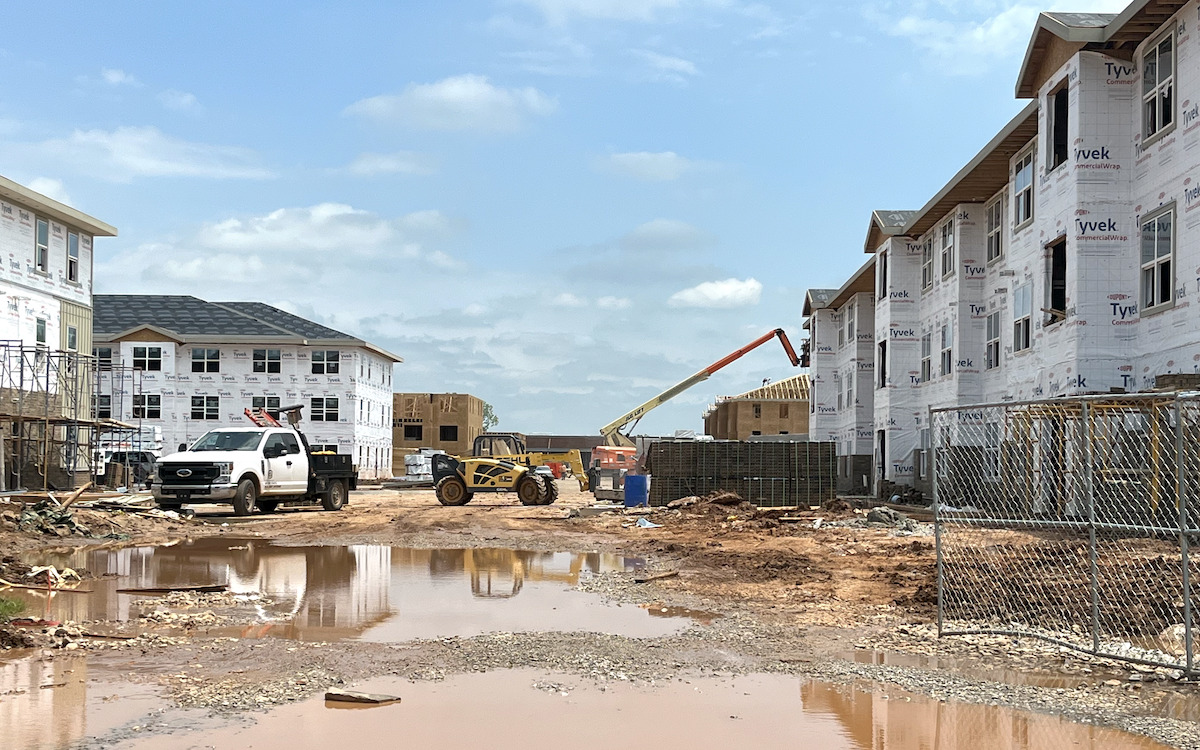
In an effort to decrease Oklahoma’s affordable housing shortage, legislative leaders are debating what could be a roughly $265 million investment to incentivize residential developments aimed at increasing the state’s supply of housing units.
While negotiations over how much money the state could dedicate to such a program have occurred behind closed doors, one bill considered earlier this session outlined the concept at hand.
HB 2870, by Wallace and Hall, would create the Oklahoma Homebuilder Program and the Oklahoma Increased Housing Program in an effort to create more affordable housing in rural and urban areas. The bill would create a revolving fund incentivizing developers to build single-family and multifamily affordable homes across the state of Oklahoma.
As proposed in HB 2870 — which made it through the House but did not receive a Senate floor hearing by a prior policy deadline — the Oklahoma Homebuilder Program would be administered by the Oklahoma Housing Finance Agency. The program would provide loans to homebuilders with interest rates as low as zero percent to build single-family homes of 2,200 square feet or less. The Oklahoma Increased Housing Program would allow developers to apply for gap financing to build single-family and multifamily housing, and it would also allow first-time homebuyers to apply for grant assistance in making down payments on a home.
According to the National Low Income Housing Coalition, Oklahoma has a shortage of about 81,600 homes available for extremely low-income renters. Housing limitations across the country have spurred policy discussions in many states, including Colorado where this year’s legislative session concluded with a major land-use bill to overhaul housing development rules falling apart.
While affordable housing needs exist across Oklahoma, major cities have faced some of the biggest strains. A Tulsa study said $2.5 billion of investment is needed over the next decade to meet the area’s housing demand. In Edmond, city government has faced a decade’s worth of political gridlock over new housing developments, with the Edmond Chamber of Commerce and others expressing concern that workers in retail, restaurant, hospital and other sectors currently cannot afford to live in a city that has an average home price of $450,000.
Oklahoma City faces similar concerns, as well as a growing homeless population. In March, the OKC City Council voted to select the Oklahoma City Housing Authority as its operating partner for a homelessness project in MAPS 4, which includes about $55 million for the purpose of building and renovating affordable housing. City leaders hope the $55 million can leverage more than $400 million in federal funding and other revenues.
At town hall on homelessness held Tuesday night in OKC, Dan Straughan, director of the Oklahoma City Homeless Alliance, said the city has historically enjoyed a more affordable housing market than other large cities around the country. But as people move into those homes and inflation keeps rising, the city is not maintaining its affordable housing, he said.
“We’re starting to lose that,” Straughan said.
Targeted transportation investment being negotiated
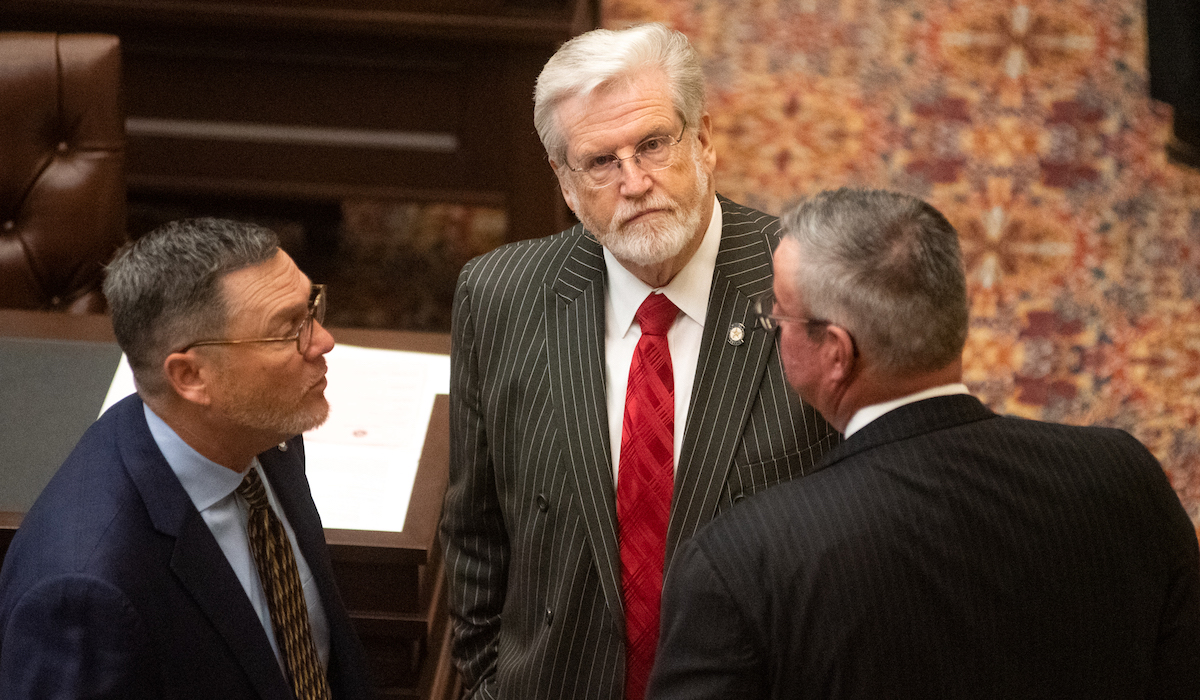
House and Senate budget leaders are negotiating a potential one-time appropriation to the Oklahoma Department of Transportation for road and infrastructure improvements in areas of the state that have seen or are preparing for major economic development.
While the House has proposed a $200 million figure for that budget item, Senate budget leaders are seeking more clarity on project parameters and are looking at a lower number.
“I think we’ve got to discuss how is the money going to be used? What is going to be the population size of the counties where it can be used?” Thompson said today. “There’s still some details (to work out).”
Thompson confirmed that the House has requested $200 million for transportation investments, but he said he is “not there yet” on that amount.
“I’ll know before the day is out,” Thompson said regarding his preferred number.
Hall, the Senate budget vice chairman, said the additional ODOT appropriation could be for projects “outside of the eight-year plan.”
“I think there could be some discretionary funds related to ODOT,” Hall said. “I know that we’re trying to make some potential funding available for those communities that have experienced some quick economic growth in the state as a result of our successful efforts for business development.”
Thompson pointed to the Enel project as a potential example of an area — Inola in Rogers County — as an example of a community that will need improved transportation with the arrival of a new manufacturing facility.
Meanwhile, a $5 million request has also been floated for mass transit needs. If approved, the money could help draw down additional federal funds from the Infrastructure Investment and Jobs Act approved by Congress in 2021. There are 37 public transit agencies in the state, including rural, urban and tribal agencies.
Asked Wednesday if he knew details about the House and Senate conversations over the proposed one-time ODOT appropriation increase, Stitt said he did not know the details.
“I’m not involved in anything on the transportation (funding discussions),” Stitt said.
Lawmakers discuss two ways to leave a ‘legacy’ investment
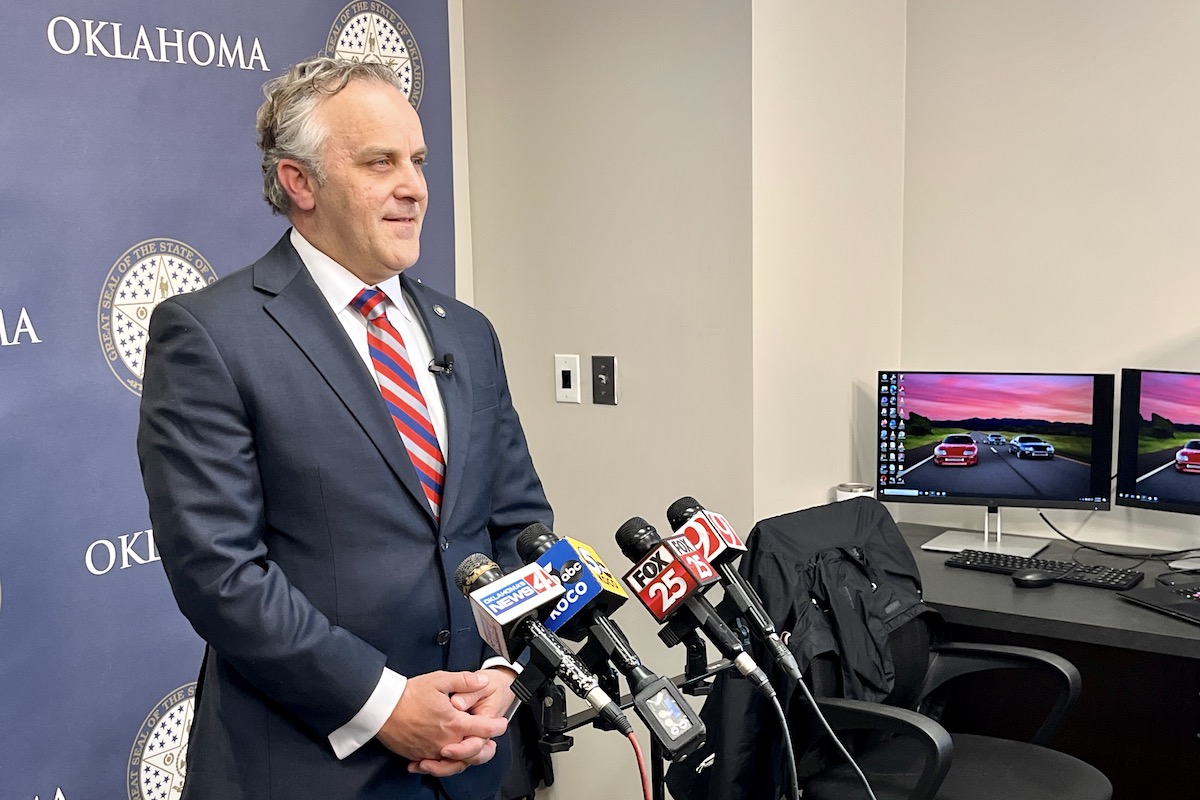
Generally speaking, House and Senate leaders share a philosophical priority: Dedicating some amount of money — as much as $1 billion — of state carryover funds to a new fund for the investment benefit of the state of Oklahoma. The devil, however, remains in the details.
In February, Treat filed SB 1101 to create a 10-member Legacy Investment Board and an “Oklahoma Legacy Fund” to invest funds designated by the Legislature for the financial benefit of the state. One proposed use for the fund would be to create a recurring revenue stream that could offset an income tax rate reduction, which Sen. John Michael Montgomery (R-Lawton) has supported.
“If the objective is tax cuts and to pay for tax cuts, the idea is to get that interest and investment income off of it quicker and do that for tax cuts,” Montgomery said. “Say we came in and dropped $600 million in it, you wouldn’t get a tax cut until we get to $1.1 billion, as it’s written.”
But House budget leaders have floated their own idea for such a fund that would allow major state agency construction projects to be financed at a zero percent interest rate. Referred to as “self-financing,” the idea was outlined in a March memo from House fiscal director and counsel John McPhetridge.
“Oklahoma is currently in possession of a large amount of non-recurring revenue; which could prove problematic in future budgets if fully plowed into the operational budget of the state. In an effort to avoid increasing the operating budget of the state in an unsustainable manner, the state could instead isolate such funding into a revolving fund and implement a capital and infrastructure budget,” McPhetridge wrote to Wallace in the memo. “By doing so the state could cash finance capital projects from the fund, and reimburse the fund for future use, with appropriations similar to those that would have been required for debt service, had the project been financed through traditional debt instead of cash.”
Wallace embraced the idea and introduced it to the Senate during budget negotiations. While Senate budget leaders initially had questions about the idea — arguing that bond debt is important to maintain the state’s overall bond rating — discussions increased in subsequent weeks.
“The fund is designed to reduce financing costs, primarily interest costs, which are increasing in the current interest rate environment, but the fund also provides liquidity options due to its flexibility,” McPhetridge wrote. “The Legislature through internal policy and appropriations controls the reimbursement schedule for the fund. For this reason the Legislature can spread out reimbursements to the fund, (the state reimbursing itself), over any time period, five, 10, 30 years, etc. and vary reimbursement schedules as needed. Additionally, if the state experiences economic downturns in the future, the state can pause/suspend reimbursements to the fund and expenditures from the fund for a period of time, allowing for the more immediate use of such funds as operational budget resources, during such downturn.”
RELATED
Overtime: Legislature collecting signatures for concurrent special session to finish FY 2024 budget by Tres Savage
For Fiscal Year 2024, “total rent payments financed through the state budget is estimated to cost” about $179 million, with roughly $55 million of that amount constituting “interest and financing fees,” according to McPhetridge’s memo.
“My thoughts are varied,” Thompson, the Senate’s budget chairman, said in an interview earlier this session. “We appropriate money back to the agencies to pay the bonds. We set it aside, they borrow the money, we appropriate them money to pay back. It does create a fund for us to do capital improvements. I’m not against that. But we do need a certain element of bonding out there for our bond rating.”
Wallace said the state could still seek market financing on certain projects to preserve Oklahoma’s bond rating, and he argued that the self-financing idea pitched by McPhetridge would somewhat insulate the state as interest rates fluctuate.
“We could capitalize our own projects and not go to the bond market. Bond rates are going up anyway, so it’s going to cost more money to do things. But we can self-finance with approval by the Legislature, just like we give bonding authority,” Wallace said in April. “[If] we are self-funding, agencies still have to pay it back. We (would) still back the bonds from the state on any projects we give the agencies authority to go bond.”
Thompson said he wanted to “respect” Wallace’s idea, but he also expressed support for Treat’s proposed Legacy Fund. Both ideas have featured about $1 billion as an initial cap level of funding.
“I’m not sure we can do both of those unless there are just smaller numbers in each one of them,” Thompson said. “I’m not anti- either one of them, but I just want to make sure we have enough money to take care of the needs of the people of Oklahoma.”










